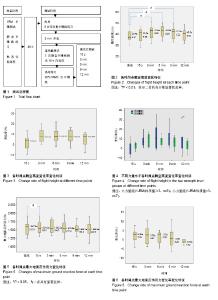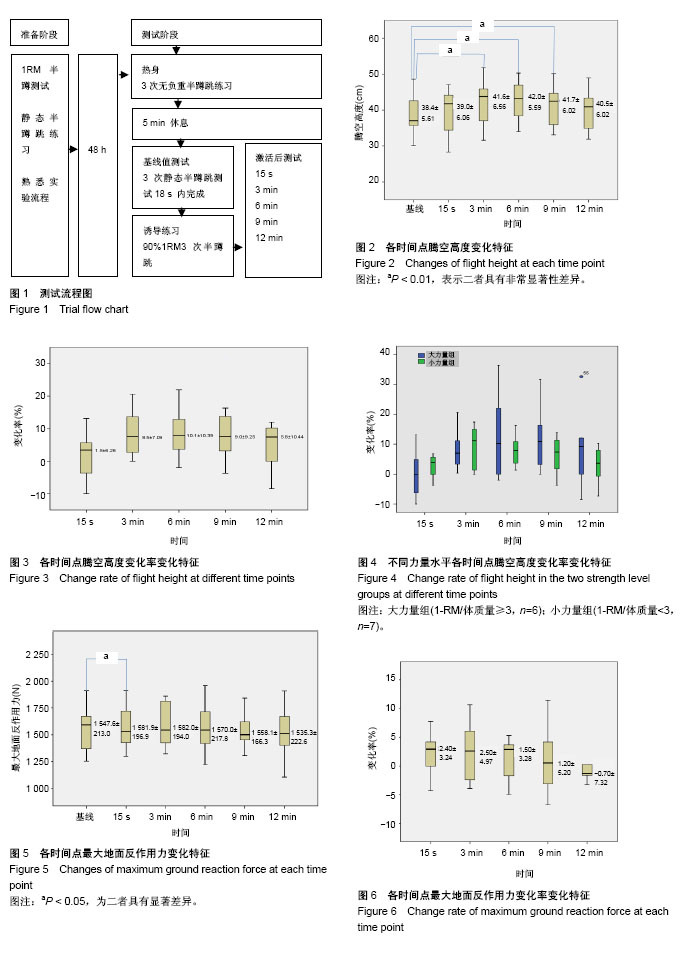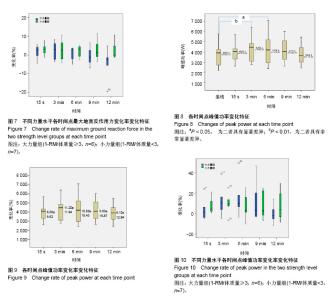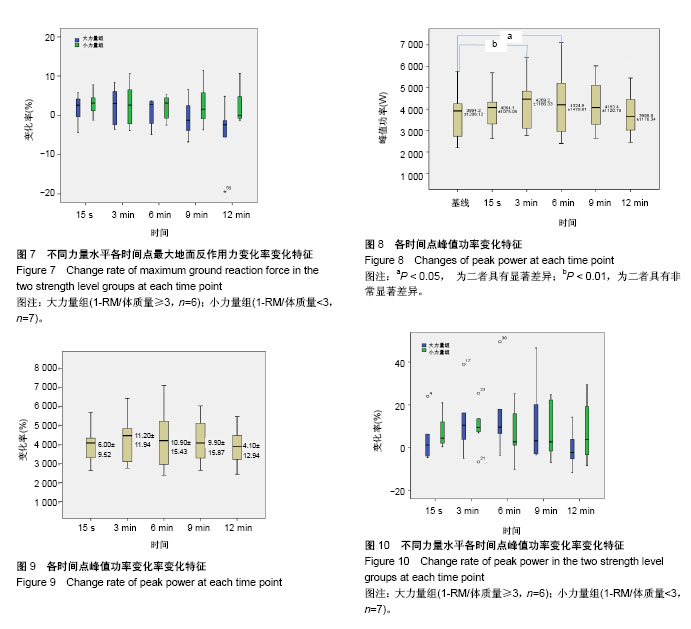Chinese Journal of Tissue Engineering Research ›› 2018, Vol. 22 ›› Issue (24): 3804-3810.doi: 10.3969/j.issn.2095-4344.0312
Previous Articles Next Articles
Postactivation potentiation in skeletal muscle from the perspective of time domain characteristics
Guo Wen-xia1, Qu Shu-hua2, Kong Zhen-xing2, Liang Mei-fu3
- 1Putian University, Putian 351100, Fujian Province, China; 2Beijing Sport University, Beijing 100084, China; 3Jinzhou Medical University, Jinzhou 121001, Liaoning Province, China
-
Received:2018-04-28 -
Contact:Liang Mei-fu, Doctoral candidate, Lecturer, Jinzhou Medical University, Jinzhou 121001, Liaoning Province, China -
About author:Guo Wen-xia, Ph.D., Putian University, Putian 351100, Fujian Province, China -
Supported by:the Education Science “13th Five-Year Plan” of Liaoning Province, No. JG16DB139
CLC Number:
Cite this article
Guo Wen-xia1, Qu Shu-hua2, Kong Zhen-xing2, Liang Mei-fu3. Postactivation potentiation in skeletal muscle from the perspective of time domain characteristics[J]. Chinese Journal of Tissue Engineering Research, 2018, 22(24): 3804-3810.
share this article

2.1 受试对象数量分析 纳入受试者13名,男性,无中途退出者,均进入结果分析,试验流程见图1。 2.2 腾空高度结果 对腾空高度各时间点观测值进行正态性检验,单样本Kolmogorov-Smirnov检验结果显示,测量数据符合正态分布(P > 0.05)。为进一步探究激活后增强效应诱导练习后腾空高度变化的时域特征,将腾空高度基线值与各时间点观测值进行配对样本t 检验,结果表明,激活后增强效应诱导练习后,受试者腾空高度基线值与 3 min(P < 0.01)、6 min(P < 0.01),9 min(P < 0.01)时观测值具有非常显著性差异。 由图2可知,腾空高度基线值(38.40±5.61) cm与3 min (41.60±6.56) cm、6 min (42.00±5.59) cm、9 min (41.70± 6.02) cm时观测值具有非常显著性差异,腾空高度峰值出现在诱导练习后6 min。由图3可知,腾空高度变化率峰值出现在诱导练习后6 min,腾空高度变化率为(10.1±10.39)%。为进一步探究不同力量水平受试者激活后增强效应的特征,将受试者分为大力量组(1-RM/体质量≥3,n=6)和小力量组(1-RM/体质量< 3,n=7)。由图4可知,诱导练习后3 min大力量组腾空高度变化率、变化率峰值、持续时间均高于小力量组,但大力量组腾空高度变化率峰值和腾空高度峰值出现时间晚于小力量组(6 min vs 3 min)。 2.3 最大地面反作用力结果 对最大地面反作用力各时间点观测值进行正态性检验,单样本Kolmogorov-Smirnov检验结果显示,测量数据符合正态分布(P > 0.05)。为进一步探究激活后增强效应诱导练习后最大地面反作用力变化的时域特征,将最大地面反作用力基线值与各时间点观测值进行配对样本t 检验,结果表明,激活后增强效应诱导练习后,受试者最大地面反作用力基线值与15 s时观测值有显著性差异(P < 0.05)。 由图5可知,最大地面反作用力基线值 (1 547.6±213.0) N与15 s(1 581.9±196.9) N时观测值具有显著性差异。最大地面反作用力峰值出现在诱导练习后 3 min,由箱型大小可知,组内个体间最大地面反作用力差异性较大,该时间点观测值与基线值在0.05水平上不具有显著性差异。由图6可知,最大地面反作用力变化率峰值出现在诱导练习后6 min,最大地面反作用力变化率为(2.50±4.97)%。由图7可知,诱导练习后小力量组各时间点最大地面反作用力变化率均为正值,且大于大力量组;大力量组最大地面反作用力变化率峰值和最大地面反作用力峰值出现时间晚于小力量组(3 min vs.15 s)。 2.4 峰值功率统计结果 对峰值功率各时间点观测值进行正态性检验,单样本Kolmogorov-Smirnov检验结果显示,测量数据符合正态分布(P > 0.05)。为进一步探究激活后增强效应诱导练习后峰值功率变化的时域特征,将峰值功率基线值与各时间点观测值进行配对样本t 检验,结果表明,激活后增强效应诱导练习后,受试者峰值功率基线值与3 min(P < 0.01)时观测值具有非常显著性差异,与 6 min(P < 0.05)时观测值具有显著性差异。 由图8可知,峰值功率基线值(3 894.2±1 206.1) W与 3 min(4 269.2±1 186.3) W时观测值具有非常显著性差异,与6 min(4 324.9±1 479.8) W时观测值具有显著性差异。峰值功率出现在诱导练习后6 min,由箱型大小可知,组内个体间峰值功率差异性较大,该时间点观测值与基线值在0.01水平上不具有显著性差异。由图9可知,峰值功率变化率峰值出现在诱导练习后3 min,峰值功率变化率为(11.2±11.94)%。由图10可知,诱导练习后大力量组3,6, 9 min峰值功率变化率大于小力量组,但持续时间小于小力量组(9 min vs 12 min);大力量组峰值功率变化率峰值和峰值功率峰值出现时间晚于小力量组(6 min vs 15 s)。"

| [1] Kilduff LP, Cunningham DJ, Owen NJ, et al. Effect of postactivation potentiation on swimming starts in international sprint swimmers. J Strength Cond Res. 2011;25(9): 2418-2423.[2] Linder EE, Prins JH, Murata NM, et al. Effects of preload 4 repetition maximum on 100-m sprint times in collegiate women. J Strength Cond Res. 2010;24(5):1184-1190.[3] Froyd C, Beltrami FG, Jensen J, et al. Potentiation and electrical stimulus frequency during self-paced exercise and recovery. J Hum Kinet. 2014;42(1):91-101. [4] Enoka RM, Fuglevand AJ. Motor unit physiology: some unresolved issues. Muscle Nerve. 2001;24(1):4-17.[5] Mahlfeld K, Franke J, Awiszus F. Postcontraction changes of muscle architecture in human quadriceps muscle. Muscle Nerve. 2004;29(4):597-600.[6] French DN, Kraemer WJ, Cooke CB. Changes in dynamic exercise performance following a sequence of preconditioning isometric muscle actions. J Strength Cond Res. 2003;17(4):678-685.[7] Berning JM, Adams KJ, DeBeliso M, et al. Effect of functional isometric squats on vertical jump in trained and untrained men. J Strength Cond Res. 2010; 24(9):2285-2289.[8] Esformes JI, Keenan M, Moody J, et al. Effect of different types of conditioning contraction on upper body postactivation potentiation. J Strength Cond Res. 2011; 25(1):143-148.[9] Weber KR, Brown LE, Coburn JW, et al. Acute effects of heavy-load squats on consecutive squat jump performance. J Strength Cond Res. 2008;22(3):726-730.[10] Hanson ED, Leigh S, Mynark RG. Acute effects of heavy-and light-load squat exercise on the kinetic measures of vertical jumping. J Strength Cond Res. 2007;21(4):1012-1017.[11] Mitchell CJ, Sale DG.. Enhancement of jump performance after a 5-RM squat is associated with postactivation potentiation. Eur J Appl Physiol. 2011; 111(8):1957-1963.[12] Cochrane DJ, Stannard SR, Firth EC, et al. Acute whole-body vibration elicits post-activation potentiation. Eur J Appl Physiol. 2010;108(2):311-319.[13] Jordan M, Norris S, Smith D, et al. Acute effects of whole-body vibration on peak isometric torque, muscle twitch torque and voluntary muscle activation of the knee extensors. Scand J Med Sci Sports. 2010;20(3):535-540.[14] Baudry S, Klass M, Duchateau J. Postactivation potentiation of short tetanic contractions is differently influenced by stimulation frequency in young and elderly adults. Eur J Appl Physiol. 2008;103(4):449-459.[15] Sygulla KS, Fountaine CJ. Acute post-activation potentiation effects in NCAA Division II female athletes. Int J Exerc Sci. 2014; 7(3):212-219.[16] Sayers SP, Harackiewicz DV, Harman EA, et al. Cross-validation of three jump power equations. Med Sci Sports Exerc. 1999;31(4):572-577.[17] Seitz LB, de Villarreal ES, Haff GG. The temporal profile of postactivation potentiation is related to strength level. J Strength Cond Res. 2014;28(3):706-715.[18] Nibali ML, Chapman DW, Robergs RA, et al. Considerations for determining the time course of post-activation potentiation. Appl Physiol Nutr Metab. 2015;40(11):1163-1170. [19] Witmer CA, Davis SE, Moir GL. The acute effects of back squats on vertical jump performance in men and women. J Sports Sci Med. 2010;9(2):206-213.[20] Khamoui AV, Brown LE, Coburn JW, et al. Effect of potentiating exercise volume on vertical jump parameters in recreationally trained men. J Strength Cond Res. 2009;23(5): 1465-1469. [21] Reardon D, Hoffman JR, Mangine GT, et al. Do changes in muscle architecture affect post-activation potentiation? J Sports Sci Med. 2014;13(3):483-491.[22] Kubo K, Kanehisa H, Kawakami Y, et al. Effects of repeated muscle contractions on the tendon structures in humans. Eur J Appl Physiol. 2001;84(1):162-166. [23] Gossen ER, Sale DG. Effect of postactivation potentiation on dynamic knee extension performance. Eur J Appl Physiol. 2000;83(6):524-530.[24] Kilduff LP, Bevan HR, Kingsley MI, et al. Postactivation potentiation in professional rugby players: optimal recovery. J Strength Cond Res. 2007;21(4):1134-1138.[25] Kilduff LP, Owen N, Bevan H, et al. Influence of recovery time on post-activation potentiation in professional rugby players. J Sports Sci. 2008;26(8):795-802.[26] Bevan HR, Owen NJ, Cunningham DJ, et al. Complex training in professional rugby players: Influence of recovery time on upper-body power output. J Strength Cond Res. 2009;23(6): 1780-1785.[27] Ruben RM, Molinari MA, Bibbee CA, et al. The acute effects of an ascending squat protocol on performance during horizontal plyometric jumps. J Strength Cond Res. 2010; 24(2):358-369.[28] Hamada T, Sale DG, MacDougall JD, et al. Postactivation potentiation, fiber type, and twitch contraction time in human knee extensor muscles. J Appl Physiol (1985). 2000;88(6): 2131-2137.[29] Weber KR, Brown LE, Coburn JW, et al. Acute effects of heavy-load squats on consecutive squat jump performance. J Strength Cond Res. 2008;22(3):726-730.[30] Horan SA, Watson SL, Lambert C, et al. Lunging Exercise Potentiates a Transient Improvement in Neuromuscular Performance in Young Adults. J Strength Cond Res.2015; 29(9):2532-2537.[31] Khamoui AV, Brown LE, Coburn JW, et al. Effect of potentiating exercise volume on vertical jump parameters in recreationally trained men. J Strength Cond Res. 2009;23(5): 1465-1469.[32] Esformes JI, Cameron N, Bampouras TM. Postactivation potentiation following different modes of exercise. J Strength Cond Res. 2010;24(7):1911-1916.[33] Robbins DW. Postactivation potentiation and its practical applicability. J Strength Cond Res. 2005;19(2):453-458.[34] Duthie GM, Young WB, Aitken DA. The acute effects of heavy loads on jump squat performance: an evaluation of the complex and contrast methods of power development. J Strength Cond Res. 2002;16(4):530-538.[35] Newton RU, Kraemer WJ. Developing explosive muscular power: implications for a mixed methods training strategy. J Strength Cond Res.1994;16(5):20-31.[36] Stone MH, O'Bryant HS, McCoy L, et al. Power and maximum strength relationships during performance of dynamic and static weighted jumps. J Strength Cond Res. 2003;17(1): 140-147.[37] Rixon KP, Lamont HS, Bemben MG.. Influence of type of muscle contraction, gender, and lifting experience on postactivation potentiation performance. J Strength Cond Res.2007; 21(2):500-505. |
| [1] | Zhang Tongtong, Wang Zhonghua, Wen Jie, Song Yuxin, Liu Lin. Application of three-dimensional printing model in surgical resection and reconstruction of cervical tumor [J]. Chinese Journal of Tissue Engineering Research, 2021, 25(9): 1335-1339. |
| [2] | Zeng Yanhua, Hao Yanlei. In vitro culture and purification of Schwann cells: a systematic review [J]. Chinese Journal of Tissue Engineering Research, 2021, 25(7): 1135-1141. |
| [3] | Xu Dongzi, Zhang Ting, Ouyang Zhaolian. The global competitive situation of cardiac tissue engineering based on patent analysis [J]. Chinese Journal of Tissue Engineering Research, 2021, 25(5): 807-812. |
| [4] | Wu Zijian, Hu Zhaoduan, Xie Youqiong, Wang Feng, Li Jia, Li Bocun, Cai Guowei, Peng Rui. Three-dimensional printing technology and bone tissue engineering research: literature metrology and visual analysis of research hotspots [J]. Chinese Journal of Tissue Engineering Research, 2021, 25(4): 564-569. |
| [5] | Chang Wenliao, Zhao Jie, Sun Xiaoliang, Wang Kun, Wu Guofeng, Zhou Jian, Li Shuxiang, Sun Han. Material selection, theoretical design and biomimetic function of artificial periosteum [J]. Chinese Journal of Tissue Engineering Research, 2021, 25(4): 600-606. |
| [6] | Liu Fei, Cui Yutao, Liu He. Advantages and problems of local antibiotic delivery system in the treatment of osteomyelitis [J]. Chinese Journal of Tissue Engineering Research, 2021, 25(4): 614-620. |
| [7] | Li Xiaozhuang, Duan Hao, Wang Weizhou, Tang Zhihong, Wang Yanghao, He Fei. Application of bone tissue engineering materials in the treatment of bone defect diseases in vivo [J]. Chinese Journal of Tissue Engineering Research, 2021, 25(4): 626-631. |
| [8] | Zhang Zhenkun, Li Zhe, Li Ya, Wang Yingying, Wang Yaping, Zhou Xinkui, Ma Shanshan, Guan Fangxia. Application of alginate based hydrogels/dressings in wound healing: sustained, dynamic and sequential release [J]. Chinese Journal of Tissue Engineering Research, 2021, 25(4): 638-643. |
| [9] | Chen Jiana, Qiu Yanling, Nie Minhai, Liu Xuqian. Tissue engineering scaffolds in repairing oral and maxillofacial soft tissue defects [J]. Chinese Journal of Tissue Engineering Research, 2021, 25(4): 644-650. |
| [10] | Xing Hao, Zhang Yonghong, Wang Dong. Advantages and disadvantages of repairing large-segment bone defect [J]. Chinese Journal of Tissue Engineering Research, 2021, 25(3): 426-430. |
| [11] | Chen Siqi, Xian Debin, Xu Rongsheng, Qin Zhongjie, Zhang Lei, Xia Delin. Effects of bone marrow mesenchymal stem cells and human umbilical vein endothelial cells combined with hydroxyapatite-tricalcium phosphate scaffolds on early angiogenesis in skull defect repair in rats [J]. Chinese Journal of Tissue Engineering Research, 2021, 25(22): 3458-3465. |
| [12] | Wang Hao, Chen Mingxue, Li Junkang, Luo Xujiang, Peng Liqing, Li Huo, Huang Bo, Tian Guangzhao, Liu Shuyun, Sui Xiang, Huang Jingxiang, Guo Quanyi, Lu Xiaobo. Decellularized porcine skin matrix for tissue-engineered meniscus scaffold [J]. Chinese Journal of Tissue Engineering Research, 2021, 25(22): 3473-3478. |
| [13] | Mo Jianling, He Shaoru, Feng Bowen, Jian Minqiao, Zhang Xiaohui, Liu Caisheng, Liang Yijing, Liu Yumei, Chen Liang, Zhou Haiyu, Liu Yanhui. Forming prevascularized cell sheets and the expression of angiogenesis-related factors [J]. Chinese Journal of Tissue Engineering Research, 2021, 25(22): 3479-3486. |
| [14] | Liu Chang, Li Datong, Liu Yuan, Kong Lingbo, Guo Rui, Yang Lixue, Hao Dingjun, He Baorong. Poor efficacy after vertebral augmentation surgery of acute symptomatic thoracolumbar osteoporotic compression fracture: relationship with bone cement, bone mineral density, and adjacent fractures [J]. Chinese Journal of Tissue Engineering Research, 2021, 25(22): 3510-3516. |
| [15] | Liu Liyong, Zhou Lei. Research and development status and development trend of hydrogel in tissue engineering based on patent information [J]. Chinese Journal of Tissue Engineering Research, 2021, 25(22): 3527-3533. |
| Viewed | ||||||
|
Full text |
|
|||||
|
Abstract |
|
|||||

